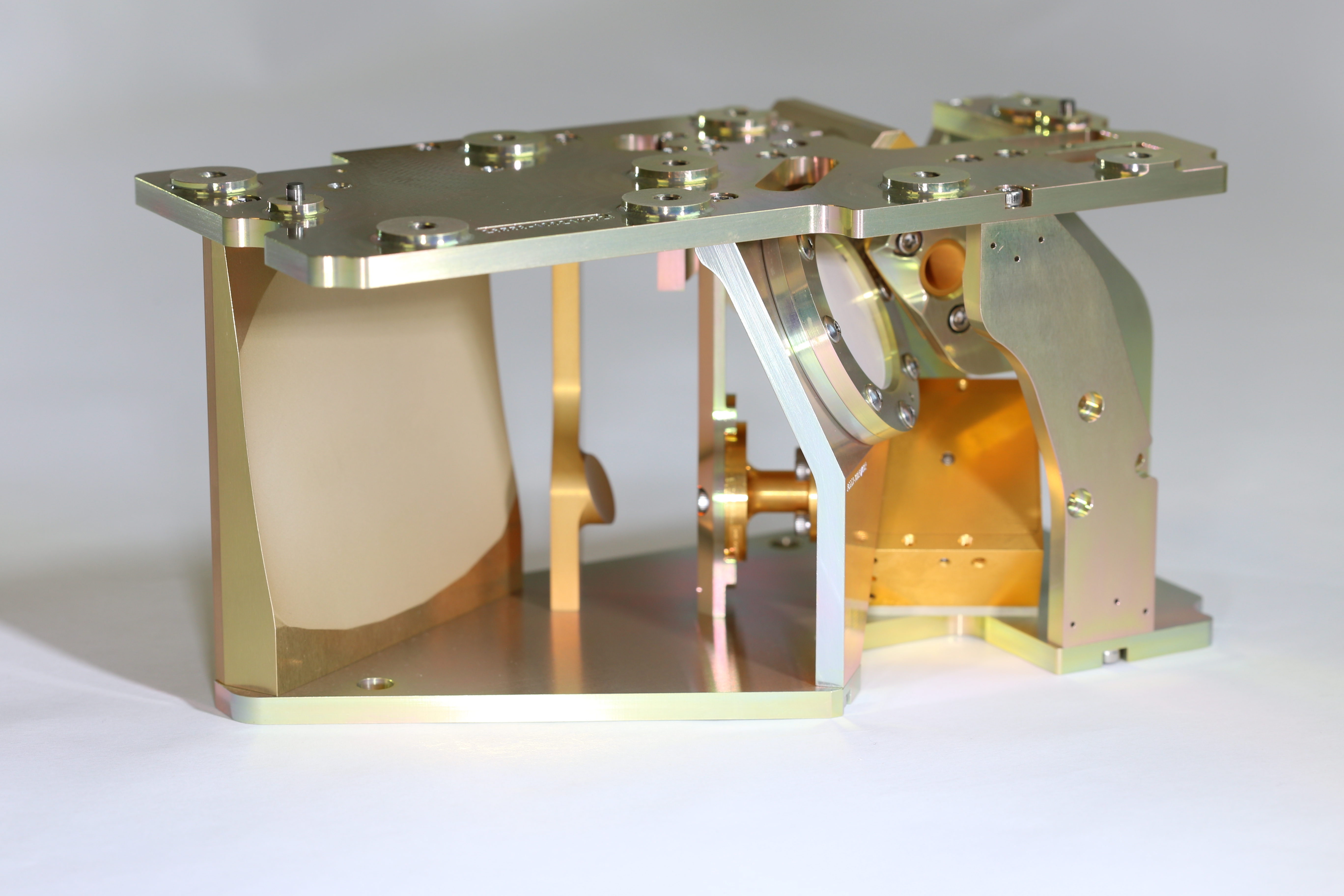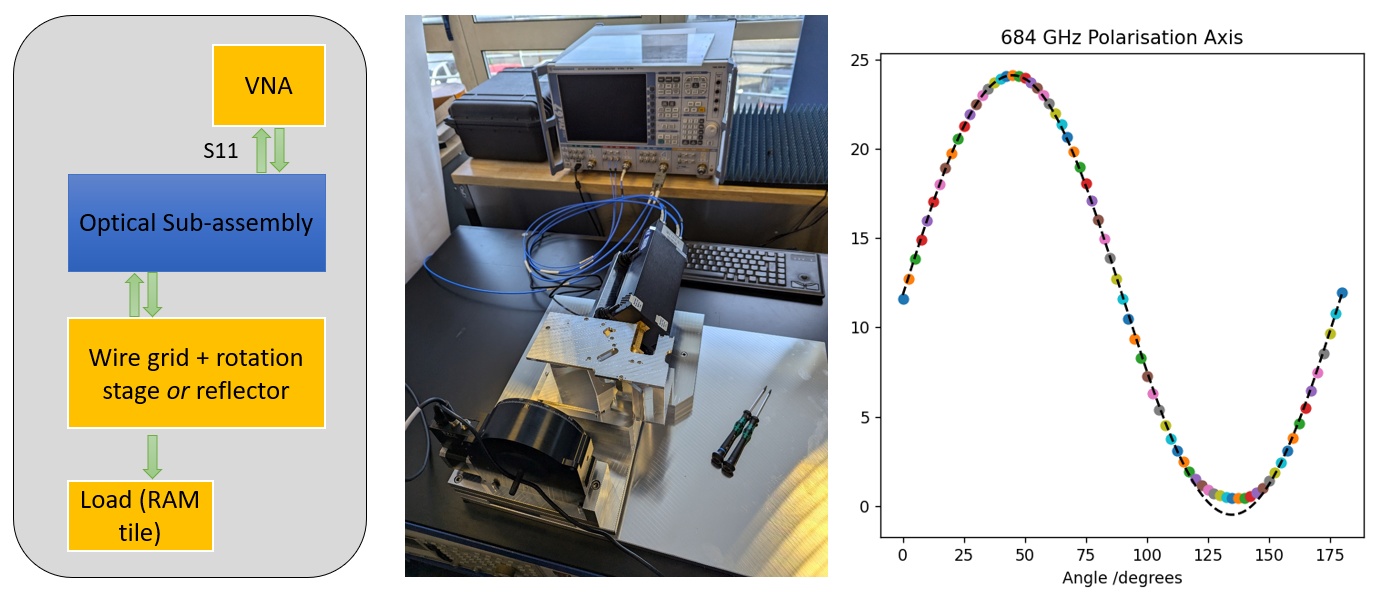Antenna for NASA PolSIR mission
TK has designed, built and measured the performance of a quasi-optical antenna for NASA Goddard's Ice-cloud Radiometer instrument - PolSIR.
'The PolSIR instrument – short for Polarized Submillimeter Ice-cloud Radiometer – will help humanity better understand Earth’s dynamic atmosphere and its impact on climate by studying ice clouds that form at high altitudes throughout tropical and sub-tropical regions. Specifically, identical pairs of the radiometers (325 and 680 GHz) will fly aboard two CubeSats' Source: https://earth.gsfc.nasa.gov/climate/instruments/polsir

The antenna combines two frequency bands centred on 325 GHz and 684 GHz, using a dichroic filter, with very low losses - better than 0.5 dB - in each channel, in a compact design.
As a dual-polarisation instrument, it was necessary to prove that the polarisation axis of the antenna could be accurately aligned (at 684 GHz the waveguide is 288um across - with a 1 degree error corresponding to only 5um). The measurement was performed using our VNA in the setup shown below, where S11 through the optics measured the reflection from a polarising wire grid backed by a load. Time gating the response and plotting as a function of angle yielded a cosine square curve which could be fitted to measure the polarisation angle to within 0.1 degree.
